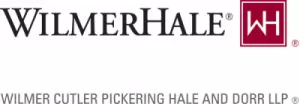- with readers working within the Telecomms industries
- within Environment topic(s)
On April 18, 2025, the Federal Circuit published an opinion in Recentive Analytics, Inc. v. Fox Corp. holding that patents claiming the application of existing machine learning models "to new data environments, without disclosing improvements to the machine learning models to be applied, are patent ineligible under §101" and citing Alice Corporation v. CLS Bank Int'l, 573 U.S. 208 (2014). The Recentive decision may lead businesses to further consider trade secrecy rather than patents to protect their AI and machine learning innovations.
Specifically, the Federal Circuit affirmed the trial court's dismissal under 35 U.S.C. §101 of Recentive's claims that machine learning techniques Fox Sports used to schedule live events and to optimize "network maps"—tasks that humans had done manually for years—infringed four patents held by Recentive. Applying Alice, the Federal Circuit agreed that the "the disputed claims . . . are directed to ineligible, abstract subject matter."1The Federal Circuit focused on a number of Recentive's concessions, including that it was "not claiming machine learning itself," that the patents' specifications would be satisfied by the use of "any suitable machine learning technique," and that the patents did not disclose "a technological improvement" on the machine learning techniques they applied to the event scheduling and network mapping tasks at issue.2
The court concluded that the patents did not "disclos[e] 'a specific implementation of a solution to a problem in the software arts,' or 'a specific means or method that solves a problem in an existing technological process'"; "the only thing the claims disclose about the use of machine learning is that machine learning is used in a new environment."3 The patents therefore "are directed to the abstract idea of using a generic machine learning technique in a particular environment" (Alice step 1), and they do not become "eligible simply because they introduce machine learning techniques to the fields of event planning and creating network maps" (Alice step 2).4
Trade secrecy may provide many businesses with a more predictable way to protect their innovative applications of machine learning. Both the Defend Trade Secrets Act and its state-law analogues broadly protect all forms and types of information, provided that it meets certain requirements, including that it can be described with specificity, provides economic value by virtue of its secrecy and is the subject of reasonable efforts to maintain its secrecy.5 Unlike other forms of intellectual property, trade secrets are not limited to information that was generated by a human creator, nor do they require up-front disclosure or filing fees. For example, depending on the circumstances, trade secret protection could extend to the method of configuring a machinelearning model to a particular use case (if that adaptation is not readily ascertainable to users or competitors), the training data employed, model weights, and model outputs.
For most companies, the principal challenge to achieving trade secret protection for an innovative application of machine learning will likely be precisely defining the trade secrets. Trade secret owners need to identify their trade secrets with reasonable particularity, both for the purpose of taking reasonable measures to protect those secrets from disclosure and to define the secrets in litigation. In advance, companies need to determine what aspects of their machine learning applications they consider to be confidential and then implement adequate protections for those specific aspects of their business—e.g., through employee training, nondisclosure agreements, confidentiality markings, and/or information security measures. And should a trade secret owner seek judicial protection from or redress for misappropriation, courts generally hold that it is not enough to "merely describe the end results of or functions formed by the claimed trade secrets," or "merely describe the claimed trade secret in conclusory terms such as 'artificial intelligence,' 'machine learning,' or 'proprietary software' without including additional specific information."6Therefore, companies seeking to protect machine learning innovations through trade secrecy should consider engaging counsel proactively to develop a robust framework for identifying and protecting trade secrets so that they will be well positioned to defend those valuable technologies should misappropriation occur.
Footnotes
1 Recentive Analytics, Inc. v. Fox Corp., No. 23-2437, Slip Op. at 11 (Fed. Cir. Apr. 18, 2025).
2 Id. at 11–12 (quoting '811 patent).
3 Id. at 13 (quoting Enfish, LLC v. Microsoft Corp., 822 F.3d 1327, 1339 (Fed. Cir. 2016), and Koninklijke KPN N.V. v. Gemalto M2M GmbH, 942 F.3d 1143, 1150 (Fed. Cir. 2019)) (citations omitted).
4 Id. at 2, 15.
5 See 18 U.S.C. § 1839; Cal. Civ. Code 3426.1.
6 T2 Modus, LLC v. Williams-Arowolo, 2023 WL 6221429, at *5 (E.D. Tex. Sep. 25, 2023).
The content of this article is intended to provide a general guide to the subject matter. Specialist advice should be sought about your specific circumstances.





